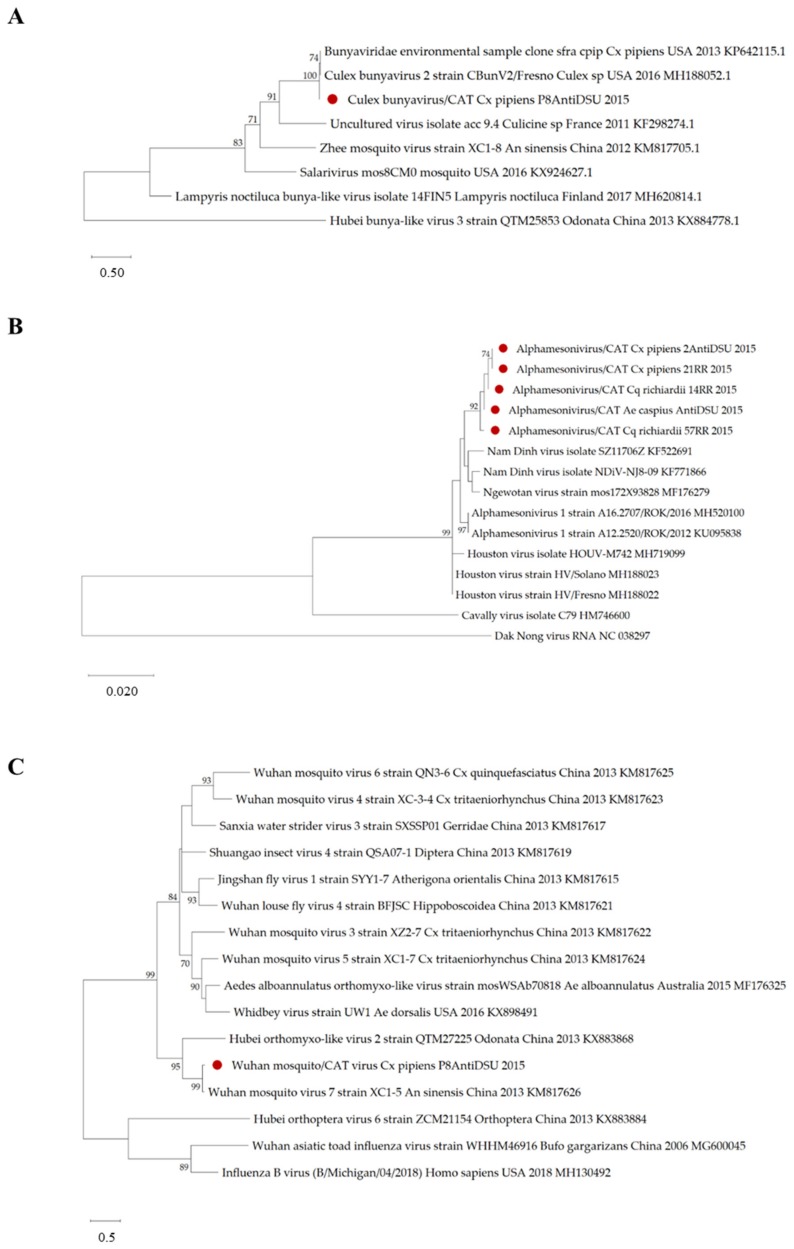Figure 3.
Phylogenetic trees of viruses detected by virus-specific RT-PCR in Catalonian mosquitoes. Trees were drawn to scale, with branch lengths measured in the number of substitutions per site. The percentage of trees in which the associated taxa clustered together is shown next to the branches. Initial tree(s) for the heuristic search were obtained automatically by applying Neighbor-Join and BioNJ algorithms to a matrix of pairwise distances estimated using the Maximum Composite Likelihood (MCL) approach, and then selecting the topology with a superior log likelihood value. Codon positions included were 1st+2nd+3rd+Noncoding. A discrete Gamma distribution was used to model evolutionary rate differences among sites. (A) Culex bunyavirus/CAT virus, evolutionary history inferred by using the Maximum Likelihood (ML) method and Hasegawa-Kishino-Yano model (HKY+G). The tree with the highest log likelihood (−6117.36) is shown (five categories (+G, parameter = 1.2252)). There were 946 positions in the final dataset. (B) Alphamesonivirus/CAT evolutionary history inferred by using the ML method and Tamura-Nei (TN93+G) model. The tree with the highest log likelihood (−2006.57) is shown (five categories (+G, parameter = 0.3417)). There were a total of 839 positions in the final dataset. (C) Wuhan mosquito/CAT virus evolutionary history was inferred by using the ML method and Tamura-Nei model (TN93+G). The tree with the highest log likelihood (−8996.79) is shown (five categories (+G, parameter = 0.7704). There were a total of 729 positions in the final dataset.

